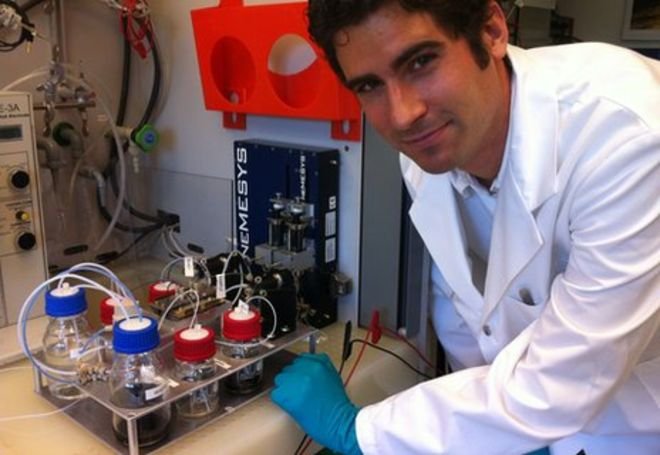
IBM Is planning to bring 5D electronical blood to your every day computer!
There are two main problems that are in question right now when developoing new computers.
As Moore's law says that every year a processor will be half the size it previously was. With this in mind arise the 2 questions
1: How do we deliver power to them
Problem is, we're getting close to a point where physics start going all weird, Quantum Physics.
Which will slowly become more and more of a problem.
2: How do we cool them down
They do get smaller but they do become more and more power hungry, with power, comes heat, and with heat...
Well, they need to be cooled down so they don't burn out which is why...
**IBM think they may already have the solution! **
5D Electronic Blood
So what's this all about? Blood in computers? 5D What the hell is that?
To understand the problem we first need to look back at our current processors, which nowdays use 3 types of cooling:
1: Passive cooling which looks like this:
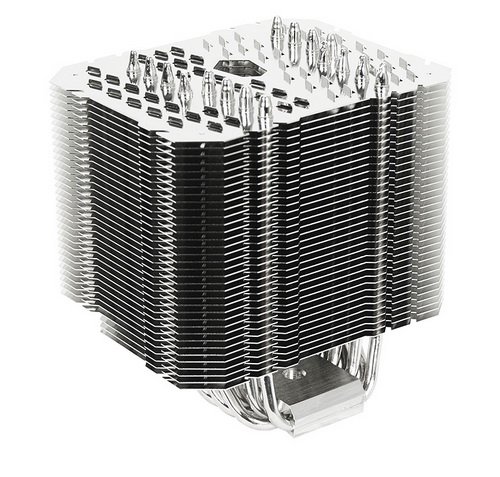
2: Active cooling - which is very similar but also includes airflow

3: Liquid Cooling - The latest cooling method
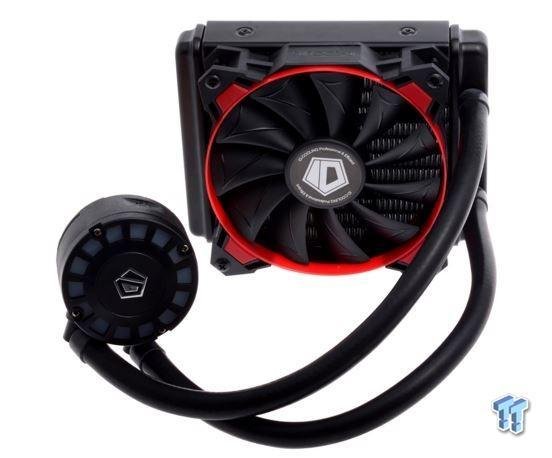
While they have gotten down in size and efficiency they don't quite have the power to cool down what's coming.
IBM thinks they may have found the solution in the human brain's blood flow cooling system.
Maybe you aren't aware but the largest supercomputers in the world only have about as much processing power as a human brain, as this diagram shows:
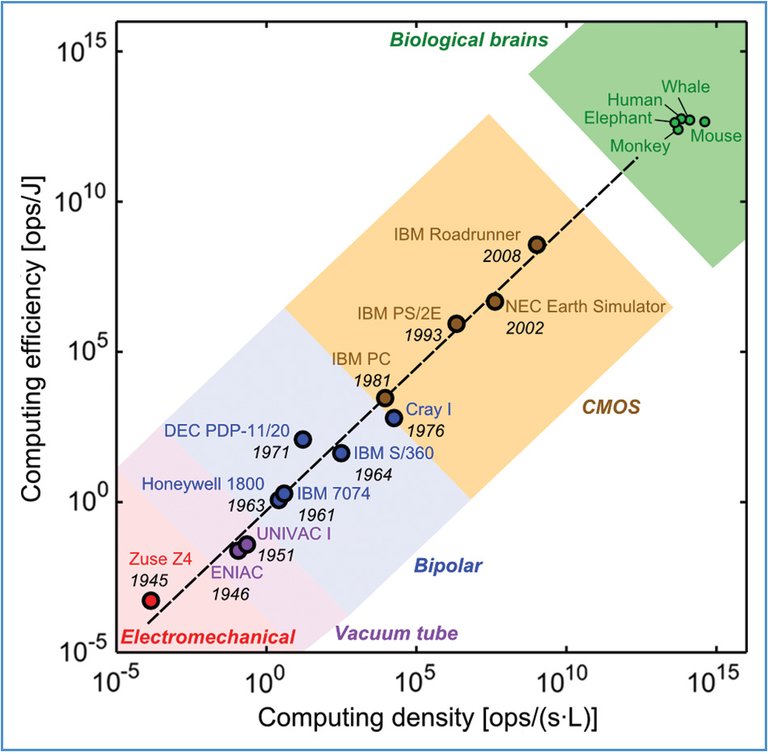
And this chart can show you how the power delivery side is very troublesome:
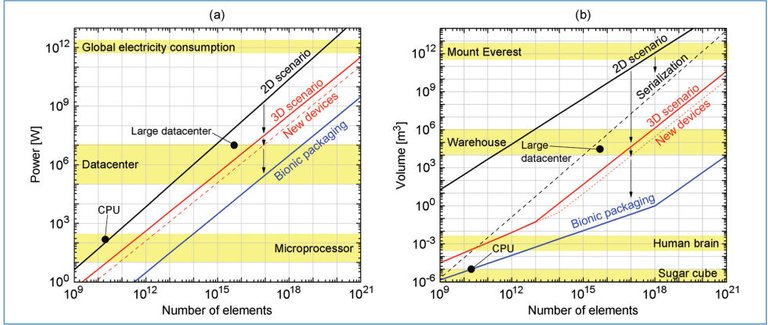
Now the problem is, having multiple processors side by side working together is a problem of space, IBM is thinking of a way to place them on top one-another.
But how on earth would we keep them from melting & how many pins would need to be at the bottom?
The Blood-Brain barrier
Some of the world's largest supercomputers have a total processing power that approximates a small mammal, but they require about 10,000,000 watts to achieve that efficiency!
And the brain is more efficient in both size & efficiency by a lot. Which is why IBM is trying to use what they name 5D Blood,
Ars technica:
The system is in its very earliest stages, but works in principle. Using IBM’s developed microfluidic channels on a sample chip, it is able to funnel in a cooling fluid solution mixed with what Ars Technica calls, “redox couples,” that are capable of producing electricity when oxidized and then reduced again to lose that charge. The idea is they flow through the chip, cooling it and delivering power to it at the same time.
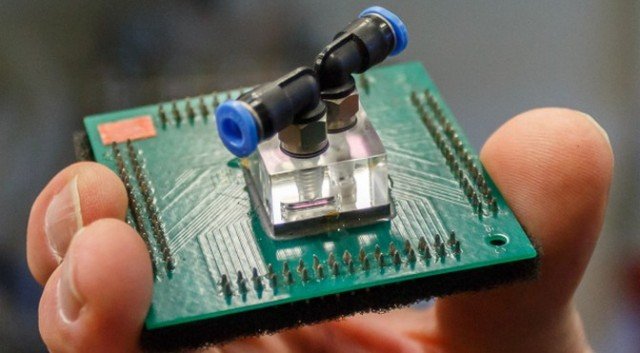
Now the problem lies in trying to build processors vertically, one of the last prototypes I've been able to find looked something like this:
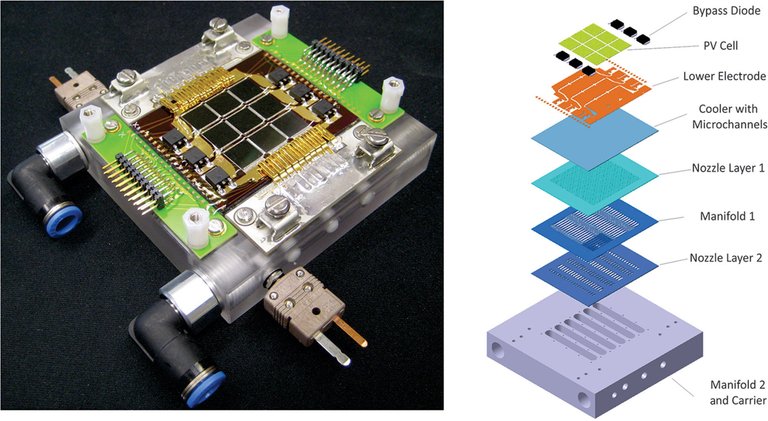
Great, they figured a way to use chemistry to both deliver power & cool down the chip simultanously, however it's still in development, and they expect this technology to be used in about 60 years!
Their idea focuses mainly on going onto the third dimension as such:
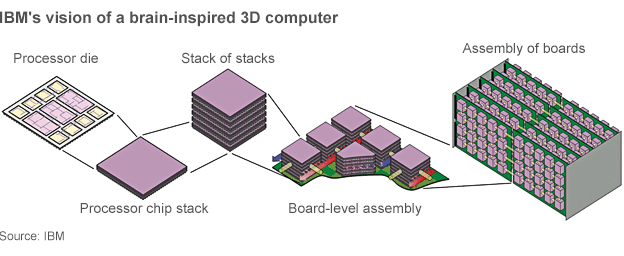
Don’t fret though, 5D isn’t a suggestion that IBM discovered time travel or anything. It’s just 3D, electrical, and cooling technology -> 5D Electronic blood.
All images are public domain.
Wow the progress we have made. I remember when I was in University I had to use the punch card system to analyze my data